 Facebook
Facebook
 X
X
 Instagram
Instagram
 TikTok
TikTok
 Youtube
Youtube
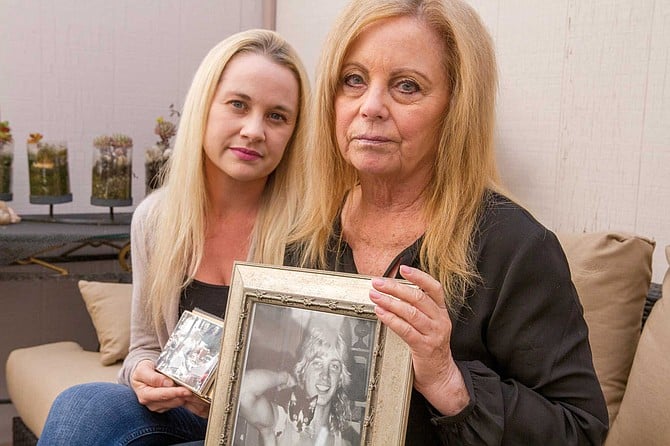
Nearly 31 years ago, Jamie Peters walked into his mother’s home in La Mesa and dropped off his house keys. It was a brief nighttime visit. He paused long enough to look around the familiar living room with a wistful gaze.

He picked up and hugged his eight-year-old sister and congratulated his younger brother on his new car. Ten days earlier, Peters had surprised everyone by moving into an El Cajon apartment. Nevertheless, a confused Cheryl Peters wondered why he was surrendering the keys. “You’re going to need those. I might not be home when you come over,” she said.
“No, Mom, it’s okay. You’ll be safer this way,” he said. She walked him to his car and Peters hugged her and said, “Mom, you just need to be safe. I love you.” Standing next to his 1970 VW Bug, he took a full and final look at the house before driving off. Bewildered, Cheryl Peters stood by the dimly lit street and watched the car disappear into the night.
That was the last time—September 2, 1988—she saw her 19-year-old son. She reported him missing a week later. Cheryl Peters has played that night in her mind dozens of times over the years; convinced that her son, whose life was teetering on an abyss of despair, was longing for home at that moment. Peters, an easygoing but troubled teen, traveled in the unforgiving world of meth dealers and addicts. He is a presumed homicide victim of the drug trade and his body has not been found.
“He would’ve been 50 on April 20. At first, when you asked me what I wanted from this, I said I don’t care who did it. It wasn’t about punishing them. I wanted my son back. That’s not how I feel now, because it’s been so many years that I want the whole package wrapped up. I want whoever’s responsible. If they’re dead, good. But I want to know who, what, why, where is he? What did you do with the body? How did he die? I want to know everything,” said Cheryl Peters.

Now 39, Peters’ sister Kamaryn remains traumatized by her brother’s death; still, she graduated from UCSD with a psychology degree. In a paper titled “Kamaryn’s Feelings” written when she was in sixth grade, she wrote, “It’s so hard to concentrate on my school work when all I think about is him. I feel like his disappearance tore our family apart. I hope that if anybody does know anything about my brother, they will come forward and tell the truth, not a lie.”
Though only twelve, she expressed fear for her safety. “It’s so hard to go through the day wondering if anybody’s out there who knows who I am and if they’re going to do something to me.” It is a fear that others tied to the case also had.
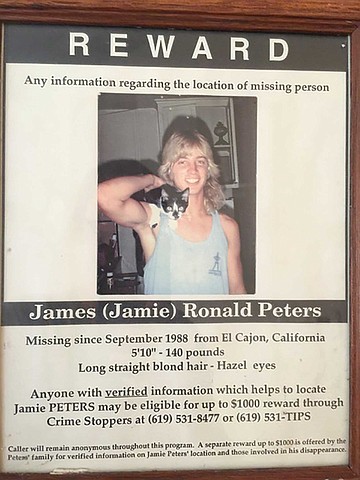
I began following Peters’ case in 1988 when I worked at the Los Angeles Times. His disappearance attracted media attention because of rumors that a satanic cult was involved. Over the years, I talked to his friends, cops, tweekers, devil worshipers and other human detritus found on El Cajon’s streets to learn what happened to him. I stayed in sporadic contact with his mother for 30 years. Peters’ story does not have an ending, and perhaps never will. New information paints a troubling picture of the days before and after he went missing. It reveals that a witness placed Peters in a Spring Valley house in the company of two men three weeks after he was last seen. The never-before-revealed witness stepped forward fourteen months after Peters’ disappearance and told police where he was being held and by whom.
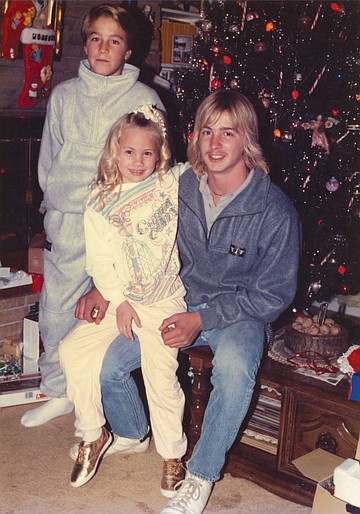
Sources close to Peters were threatened and still fear for their lives. They will remain anonymous in this story. Police have not named anyone a suspect. Some whose names were given to police as possible suspects but not charged will not be identified, but their roles will be explained. El Cajon police declined to comment for this story.
In the 1980s, before Mexican cartels took control of the meth trade, East San Diego County was the leading producer of meth in the world. The region was a near narco state with El Cajon as the capital. Cooking meth was a cottage industry and two labs, RJM Laboratories in Lakeside and Safe Laboratories, Inc. in Santee, provided the chemicals, glassware, and other equipment used to manufacture the drug, including a glass tub large enough to cook 200 liters (52 gallons) of meth. Federal prosecutors said these labs and one in North Hollywood — all owned by one man — sold enough chemicals in the 1980s to give everyone in the world a meth high. The businesses were shut down by DEA agents two weeks before Peters went missing.
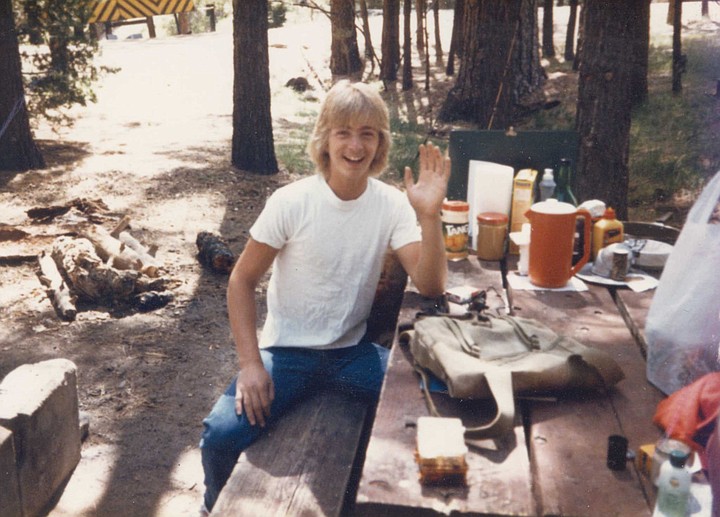
Cheryl Peters knew her son was using meth but did not learn he was selling the drug until after he disappeared. “He always had a pretty good head on his shoulders and was incredibly social. He knew how to talk to people. But at that point I knew he was doing meth.”
Peters and his best friend, who was 18 months younger, were tweekers who met in high school. He now owns an East County business. Pushing 50 and with a family, he said he has been sober for 20 years. He and Peters went from using meth to selling it for a couple of suppliers; a former neighbor of Peters and a shadowy character known as “the Marine” who Peters would meet at motels. It was Peters who would pick up the drugs they sold. Others said Peters may have been selling for other suppliers, too.
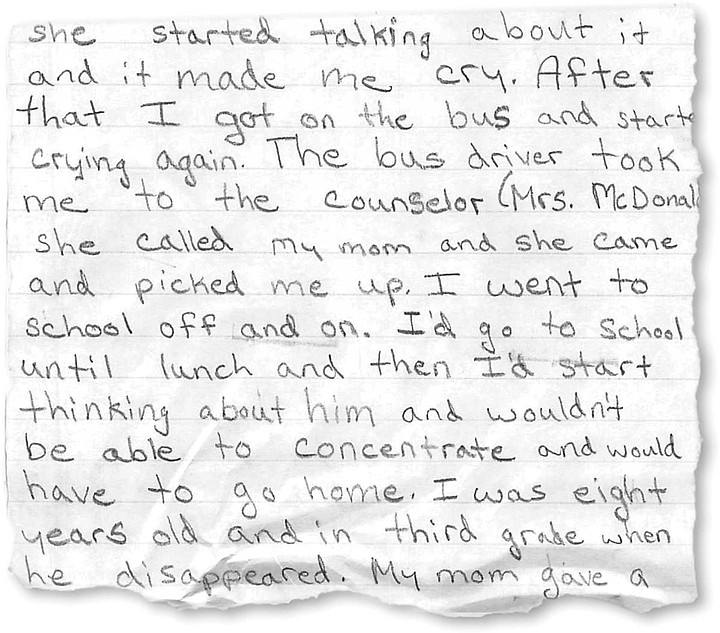
Peters’ relationship with his neighbor and supplier, who died in 2009, was complicated. The neighbor's ex-wife said she was interviewed in 1988 or 1989 by detectives who wanted to know about her ex-husband’s relationship with Peters. Peters was not getting along with his father and moved in with them for a brief period before going to live with his grandparents.
Peters’ friend said they sold drugs to high school kids. “We’d get 10 percent [commission] but the biggest thing is that we used a lot. A lot of our profits went up our nose. The biggest thing is we sold to keep our habit,” he said.
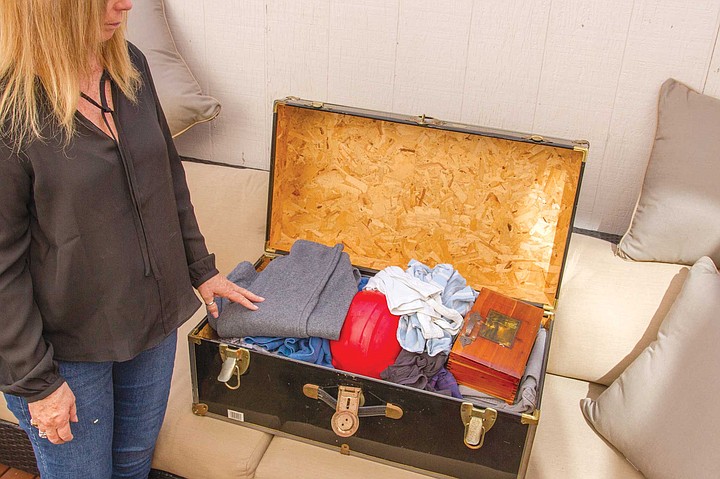
In addition to selling meth, Peters’ friend sold pot for a friend who lived across the street. He kept the drugs and proceeds in a case hidden under his bed. He was hosting a group of friends one morning before school when his mother peeked through the bedroom window and saw the drugs and money on the bed. She ordered them removed from the house.
“She made me leave to go to high school with a whole lot of drugs and a whole lot of money. I got out of school and went to [Peters’ neighbor’s] house. I basically stashed all my money over there and whatever stuff I had,” he said.
Besides tweeking, Peters and his friend had another thing in common; they came from troubled homes. The friend’s parents were divorced and Peters’ parents divorced after he disappeared.
Peters moved in with Salvador Richard “Ricky” Ruiz, who was also nineteen, in an apartment at 1019 Peach Avenue in El Cajon. The complex and area were known to local police for heavy drug activity.
Police said Ruiz was not forthcoming with what he knew about Peters. About nine weeks after Peters was last seen, Ruiz was arrested for beating another nineteen-year-old roommate on the head with a baseball bat.
In a 1989 jailhouse interview with the El Cajon Daily Californian, Ruiz said he last saw Peters around September 2, the same day Cheryl Peters saw him last. According to Ruiz, Peters arrived at two or three in the morning, stuffed some things inside a gray duffle bag, and took off. He said Peters had called before coming over and asked if anyone was in the apartment. The newspaper reported that detectives seized satanic literature when they searched Ruiz’s apartment but he said it was left there by someone else.
It was a phone call to the apartment that alerted Cheryl Peters something was wrong. Previously, the answering machine recording said that Jamie and Ricky were not available. When she had not heard from her son for several days she called him and the answering machine said only that Ricky was not available.
Ruiz told her that a biker type “enforcer” had knocked at the apartment a few days earlier looking for Peters. A law enforcement source who knows the man’s identity described him as a “knuckle dragger and Hells Angel wannabe.”
Peters told his friends he was in trouble and was being followed, and hinted that he owed someone a lot of money. The tweeker rumor mill said Peters had ripped off a supplier or had the supplier’s money stolen from him, but neither story has been confirmed. At the time he was snorting more meth and staying awake for days at a time.
“Toward the end,” said his best friend, “you could say Jamie was using way too much of the product. From the few things Jamie told me he owed a lot of money to somebody. He didn’t tell me who, but he was probably using a lot more of the product than he was selling and couldn’t pay it back. Meth dealers were not very forgiving in those days.”
He last saw Peters about eight days before he disappeared. “He came to my house in the middle of the day and told me that someone had been following him for a couple of days. He was all freaked out. He was scared,” said the friend.
After media attention began to focus on Peters’ case, the friend said he received a death threat. “I was sitting in my car and a white guy walked up and told me to stay the fuck out of it. I don’t know who it was but it scared me straight,” he said. The threat made him hesitant to talk to police until much later.
A second friend said he was riding with Peters in his VW Bug on the 125 Freeway when a red Camaro IROC –Z pulled alongside and the driver yelled at Peters, “You’re dead.” This was a few days before his disappearance. The man, who is now 50, said he identified the driver from an El Cajon Police photograph and the officer told him, “He’s a real bad dude.” He, too, did not speak to investigators until much later.
On Dec. 5, 1988 San Diego County Sheriff’s deputies found Peters’ VW stripped and abandoned on Mussey Grade Road in Ramona. A swastika was scratched on the roof and investigators were unsure of its significance. Later the Sheriff’s intelligence unit gave El Cajon Police the name of the man who had towed the vehicle but did not share any more information. The tow driver moved out of state and it is unknown if he was ever interviewed by police.
The tweeker rumor mill said bloody underwear was found in the vehicle but police have not confirmed that. El Cajon Police kept the car as evidence but released it to Cheryl Peters in the summer of 1989. The family got rid of it several years ago.
A little more than a year after Peters went missing, an inmate at the downtown County Jail said he had information about Peters and wanted to talk to El Cajon Police. Michael Edwin Farris, a habitual drug user, said he was staying in a Spring Valley house where Peters was held for a few days after he was reported missing. Farris, who died in 2000, said Peters was brought there by two men and appeared scared and intimidated. He gave investigators the full name of one man and the first name of the other and positively identified Peters in a blown-up photo. Farris said he heard about the case from a television broadcast in late 1988.
He also gave police the name of the man who lived at the house, which he described as a fugitive hideout where meth was manufactured and sold. He said the occupant and one of Peters’ minders practiced satanic rituals in the house.
Peters and the two men came and went three or four times, and they never let him out of their sight or allowed him to talk freely. Farris said Peters never told him his name but once blurted out that he had not been home in three weeks. Farris said the last time he saw Peters, one of the men was yelling and pushed him inside a car. Farris said he asked the other man about Peters, but was told not to worry because that was the last he would see of him. The two men returned three days later without him.
Rumors swirled about what happened to Peters and who was responsible. The problem was the stories were circulated by meth freaks whose credibility was questionable. The most consistent one said Peters was taken and killed by a drug/satanic cult called the Rainbow Children (also called Children of the Rainbow). An acquaintance of Peters' said the cult drugged him and kept him in a closet before killing him.
Farris said a small group that got together for satanic rituals at the Spring Valley house called themselves Children of the Rainbow. He said he usually left the house during the rituals, but it is unknown if any of his information was confirmed by police.
Peters’ family has heard that his death was video recorded. Another story said he was beaten with a baseball bat. Yet another said his remains were buried in the desert near Borrego Springs. If the latter is true, it could be a significant lead. The truck allegedly used to tow Peters’ vehicle to Mussey Grade Road belonged to a business in Ranchita, about 13 miles from Borrego Springs. The business owner cooperated with police and was never considered a suspect.
Cheryl Peters was a court reporter at the El Cajon courthouse at the time. Based on her daily contact with law enforcement, she believes police dragged their feet in her son’s case.
A law enforcement source familiar with the case said the attitude among some at El Cajon Police was that whatever happened to Peters was inevitable because of the world he lived in. “This was a doper kid who got himself mixed up in all this business and now he’s disappeared as a result. They like to solve everything, but I don’t think the effort was put into it [compared to] what you would see in a JonBenet Ramsey case.”
But the official faults Peters’ friends and acquaintances for not cooperating with police at the beginning, the optimum time for solving cases. “You know what would’ve been nice? It would’ve been nice if the dopers, the people who had the most information about this, would’ve come forward and gotten involved in the investigation. That would’ve been nice. This is all about dopers and doper world and doing deals and rip-offs,” the official said.
The official is correct. Investigators did not get a lot of cooperation early on. One key witness did not talk to detectives until 2006, only after he was secretly recorded by Kevin LaChappelle, a private investigator and former El Cajon officer who took an interest in the case after befriending Peters’ brother and mother while still a cop. The witness had been threatened.
“He led me to believe that people needed just to let this go because there’s too many things that can happen to people and they can never be heard from again. He knew all about [Peters’ neighbor and supplier]. I believe he corroborated that Jamie was selling for [the neighbor]. He corroborated a lot of that stuff,” said LaChappelle. He gave the recording to the District Attorney’s office. He also paid for a billboard asking for help in solving Peters’ murder.
LaChappelle, who worked gangs, wrote Please God, Don’t Let My Badge Tarnish, a critical book about his experience at the department. It includes an account of the Peters case and suggests that Peters’ dead neighbor was involved in his disappearance. After becoming interested in Peters’ case, he said superiors discouraged him from getting involved and he found “a lot of missing information” in the crime report.
“There were times I was told, ‘Why are you looking into this? Leave it alone,’ said LaChapelle, who spoke at Peters’ memorial service on May 27, 1992. ‘In law enforcement, when you’re told stuff like that, you have to make an assumption there’s some cop politics involved.”
However, it was not just a muted police response or reluctant witnesses that hurt the investigation. Looking back, Cheryl Peters admits that she was an obstacle. Desperate to find her son and wary of the cops, she hired Richard Post, an unlicensed and discredited private investigator who convinced her Jamie was killed by the Rainbow Children and police were covering up for the killers. It was the same story told to me on the streets.
“I was so desperate for answers. He seemed to know what he was talking about. At that point I was willing to grasp on to anything. It was damaging to the case and to me. It set me back even further,” she said. Her father paid Post about $15,000, including for a nighttime helicopter flight across East County to look for a satanic hideout, during which Post wore night-vision goggles.
Post passed himself off as a cult expert. He was kidnapped, tortured and murdered in 1998 by two men paid $50,000 by a client, turned business partner, turned lover who believed he was stealing from her and cheating with another woman. He was killed in Tijuana and his body never found.
With her mother immersed in her brother’s case, Kamaryn Peters struggled with her own emotions and for Cheryl’s attention. “I didn’t have a mom. I was raised by my dad. Jamie’s disappearance, coming from my perspective at eight, it’s been almost my whole life.” The two later reconciled and remain close.
As she grew older, she “dove into true crime,” especially stories about cold cases. She reached out to all the crime shows on television to look at her brother’s case, but never got a response.
“We watch reports on things sometimes and... we say, 'At least they found her body. At least they know.' It’s a horrible thing to say,” said Kamaryn Peters.
“You know how I feel as his mom?" said Cheryl Peters. "When a story comes up that they found a skeleton somewhere, to automatically go, ‘Maybe it’s Jamie.’ It’s like a knife in your heart. No one should think about what I think every time I hear something like that on the news. But it’s a little glimmer of hope that maybe those bones are my son."
As with many stories that end tragically, this one includes a “what if," a could-have-been alternate history that torments Cheryl Peters. She was 19 when she had her son and agreed to let a couple adopt him. They were at the hospital when she gave birth, ready to take possession of him, but she changed her mind.
“What could’ve I done wrong? What could’ve I done different? Maybe I should’ve given him up for adoption. Maybe he would’ve had a long life. There’s a lot of things that flash though my mind,” she said.
“Sometimes we have to deal with very sad and serious things, but we learn that life always goes on,” Kamaryn Peters wrote in the sixth grade. “The new beginning that I experienced was dealing with my brother’s disappearance and having to believe that Jamie’s gone and he’s not coming back.”


Nearly 31 years ago, Jamie Peters walked into his mother’s home in La Mesa and dropped off his house keys. It was a brief nighttime visit. He paused long enough to look around the familiar living room with a wistful gaze.

He picked up and hugged his eight-year-old sister and congratulated his younger brother on his new car. Ten days earlier, Peters had surprised everyone by moving into an El Cajon apartment. Nevertheless, a confused Cheryl Peters wondered why he was surrendering the keys. “You’re going to need those. I might not be home when you come over,” she said.
“No, Mom, it’s okay. You’ll be safer this way,” he said. She walked him to his car and Peters hugged her and said, “Mom, you just need to be safe. I love you.” Standing next to his 1970 VW Bug, he took a full and final look at the house before driving off. Bewildered, Cheryl Peters stood by the dimly lit street and watched the car disappear into the night.
That was the last time—September 2, 1988—she saw her 19-year-old son. She reported him missing a week later. Cheryl Peters has played that night in her mind dozens of times over the years; convinced that her son, whose life was teetering on an abyss of despair, was longing for home at that moment. Peters, an easygoing but troubled teen, traveled in the unforgiving world of meth dealers and addicts. He is a presumed homicide victim of the drug trade and his body has not been found.
“He would’ve been 50 on April 20. At first, when you asked me what I wanted from this, I said I don’t care who did it. It wasn’t about punishing them. I wanted my son back. That’s not how I feel now, because it’s been so many years that I want the whole package wrapped up. I want whoever’s responsible. If they’re dead, good. But I want to know who, what, why, where is he? What did you do with the body? How did he die? I want to know everything,” said Cheryl Peters.

Now 39, Peters’ sister Kamaryn remains traumatized by her brother’s death; still, she graduated from UCSD with a psychology degree. In a paper titled “Kamaryn’s Feelings” written when she was in sixth grade, she wrote, “It’s so hard to concentrate on my school work when all I think about is him. I feel like his disappearance tore our family apart. I hope that if anybody does know anything about my brother, they will come forward and tell the truth, not a lie.”
Though only twelve, she expressed fear for her safety. “It’s so hard to go through the day wondering if anybody’s out there who knows who I am and if they’re going to do something to me.” It is a fear that others tied to the case also had.

I began following Peters’ case in 1988 when I worked at the Los Angeles Times. His disappearance attracted media attention because of rumors that a satanic cult was involved. Over the years, I talked to his friends, cops, tweekers, devil worshipers and other human detritus found on El Cajon’s streets to learn what happened to him. I stayed in sporadic contact with his mother for 30 years. Peters’ story does not have an ending, and perhaps never will. New information paints a troubling picture of the days before and after he went missing. It reveals that a witness placed Peters in a Spring Valley house in the company of two men three weeks after he was last seen. The never-before-revealed witness stepped forward fourteen months after Peters’ disappearance and told police where he was being held and by whom.

Sources close to Peters were threatened and still fear for their lives. They will remain anonymous in this story. Police have not named anyone a suspect. Some whose names were given to police as possible suspects but not charged will not be identified, but their roles will be explained. El Cajon police declined to comment for this story.
In the 1980s, before Mexican cartels took control of the meth trade, East San Diego County was the leading producer of meth in the world. The region was a near narco state with El Cajon as the capital. Cooking meth was a cottage industry and two labs, RJM Laboratories in Lakeside and Safe Laboratories, Inc. in Santee, provided the chemicals, glassware, and other equipment used to manufacture the drug, including a glass tub large enough to cook 200 liters (52 gallons) of meth. Federal prosecutors said these labs and one in North Hollywood — all owned by one man — sold enough chemicals in the 1980s to give everyone in the world a meth high. The businesses were shut down by DEA agents two weeks before Peters went missing.

Cheryl Peters knew her son was using meth but did not learn he was selling the drug until after he disappeared. “He always had a pretty good head on his shoulders and was incredibly social. He knew how to talk to people. But at that point I knew he was doing meth.”
Peters and his best friend, who was 18 months younger, were tweekers who met in high school. He now owns an East County business. Pushing 50 and with a family, he said he has been sober for 20 years. He and Peters went from using meth to selling it for a couple of suppliers; a former neighbor of Peters and a shadowy character known as “the Marine” who Peters would meet at motels. It was Peters who would pick up the drugs they sold. Others said Peters may have been selling for other suppliers, too.

Peters’ relationship with his neighbor and supplier, who died in 2009, was complicated. The neighbor's ex-wife said she was interviewed in 1988 or 1989 by detectives who wanted to know about her ex-husband’s relationship with Peters. Peters was not getting along with his father and moved in with them for a brief period before going to live with his grandparents.
Peters’ friend said they sold drugs to high school kids. “We’d get 10 percent [commission] but the biggest thing is that we used a lot. A lot of our profits went up our nose. The biggest thing is we sold to keep our habit,” he said.

In addition to selling meth, Peters’ friend sold pot for a friend who lived across the street. He kept the drugs and proceeds in a case hidden under his bed. He was hosting a group of friends one morning before school when his mother peeked through the bedroom window and saw the drugs and money on the bed. She ordered them removed from the house.
“She made me leave to go to high school with a whole lot of drugs and a whole lot of money. I got out of school and went to [Peters’ neighbor’s] house. I basically stashed all my money over there and whatever stuff I had,” he said.
Besides tweeking, Peters and his friend had another thing in common; they came from troubled homes. The friend’s parents were divorced and Peters’ parents divorced after he disappeared.
Peters moved in with Salvador Richard “Ricky” Ruiz, who was also nineteen, in an apartment at 1019 Peach Avenue in El Cajon. The complex and area were known to local police for heavy drug activity.
Police said Ruiz was not forthcoming with what he knew about Peters. About nine weeks after Peters was last seen, Ruiz was arrested for beating another nineteen-year-old roommate on the head with a baseball bat.
In a 1989 jailhouse interview with the El Cajon Daily Californian, Ruiz said he last saw Peters around September 2, the same day Cheryl Peters saw him last. According to Ruiz, Peters arrived at two or three in the morning, stuffed some things inside a gray duffle bag, and took off. He said Peters had called before coming over and asked if anyone was in the apartment. The newspaper reported that detectives seized satanic literature when they searched Ruiz’s apartment but he said it was left there by someone else.
It was a phone call to the apartment that alerted Cheryl Peters something was wrong. Previously, the answering machine recording said that Jamie and Ricky were not available. When she had not heard from her son for several days she called him and the answering machine said only that Ricky was not available.
Ruiz told her that a biker type “enforcer” had knocked at the apartment a few days earlier looking for Peters. A law enforcement source who knows the man’s identity described him as a “knuckle dragger and Hells Angel wannabe.”
Peters told his friends he was in trouble and was being followed, and hinted that he owed someone a lot of money. The tweeker rumor mill said Peters had ripped off a supplier or had the supplier’s money stolen from him, but neither story has been confirmed. At the time he was snorting more meth and staying awake for days at a time.
“Toward the end,” said his best friend, “you could say Jamie was using way too much of the product. From the few things Jamie told me he owed a lot of money to somebody. He didn’t tell me who, but he was probably using a lot more of the product than he was selling and couldn’t pay it back. Meth dealers were not very forgiving in those days.”
He last saw Peters about eight days before he disappeared. “He came to my house in the middle of the day and told me that someone had been following him for a couple of days. He was all freaked out. He was scared,” said the friend.
After media attention began to focus on Peters’ case, the friend said he received a death threat. “I was sitting in my car and a white guy walked up and told me to stay the fuck out of it. I don’t know who it was but it scared me straight,” he said. The threat made him hesitant to talk to police until much later.
A second friend said he was riding with Peters in his VW Bug on the 125 Freeway when a red Camaro IROC –Z pulled alongside and the driver yelled at Peters, “You’re dead.” This was a few days before his disappearance. The man, who is now 50, said he identified the driver from an El Cajon Police photograph and the officer told him, “He’s a real bad dude.” He, too, did not speak to investigators until much later.
On Dec. 5, 1988 San Diego County Sheriff’s deputies found Peters’ VW stripped and abandoned on Mussey Grade Road in Ramona. A swastika was scratched on the roof and investigators were unsure of its significance. Later the Sheriff’s intelligence unit gave El Cajon Police the name of the man who had towed the vehicle but did not share any more information. The tow driver moved out of state and it is unknown if he was ever interviewed by police.
The tweeker rumor mill said bloody underwear was found in the vehicle but police have not confirmed that. El Cajon Police kept the car as evidence but released it to Cheryl Peters in the summer of 1989. The family got rid of it several years ago.
A little more than a year after Peters went missing, an inmate at the downtown County Jail said he had information about Peters and wanted to talk to El Cajon Police. Michael Edwin Farris, a habitual drug user, said he was staying in a Spring Valley house where Peters was held for a few days after he was reported missing. Farris, who died in 2000, said Peters was brought there by two men and appeared scared and intimidated. He gave investigators the full name of one man and the first name of the other and positively identified Peters in a blown-up photo. Farris said he heard about the case from a television broadcast in late 1988.
He also gave police the name of the man who lived at the house, which he described as a fugitive hideout where meth was manufactured and sold. He said the occupant and one of Peters’ minders practiced satanic rituals in the house.
Peters and the two men came and went three or four times, and they never let him out of their sight or allowed him to talk freely. Farris said Peters never told him his name but once blurted out that he had not been home in three weeks. Farris said the last time he saw Peters, one of the men was yelling and pushed him inside a car. Farris said he asked the other man about Peters, but was told not to worry because that was the last he would see of him. The two men returned three days later without him.
Rumors swirled about what happened to Peters and who was responsible. The problem was the stories were circulated by meth freaks whose credibility was questionable. The most consistent one said Peters was taken and killed by a drug/satanic cult called the Rainbow Children (also called Children of the Rainbow). An acquaintance of Peters' said the cult drugged him and kept him in a closet before killing him.
Farris said a small group that got together for satanic rituals at the Spring Valley house called themselves Children of the Rainbow. He said he usually left the house during the rituals, but it is unknown if any of his information was confirmed by police.
Peters’ family has heard that his death was video recorded. Another story said he was beaten with a baseball bat. Yet another said his remains were buried in the desert near Borrego Springs. If the latter is true, it could be a significant lead. The truck allegedly used to tow Peters’ vehicle to Mussey Grade Road belonged to a business in Ranchita, about 13 miles from Borrego Springs. The business owner cooperated with police and was never considered a suspect.
Cheryl Peters was a court reporter at the El Cajon courthouse at the time. Based on her daily contact with law enforcement, she believes police dragged their feet in her son’s case.
A law enforcement source familiar with the case said the attitude among some at El Cajon Police was that whatever happened to Peters was inevitable because of the world he lived in. “This was a doper kid who got himself mixed up in all this business and now he’s disappeared as a result. They like to solve everything, but I don’t think the effort was put into it [compared to] what you would see in a JonBenet Ramsey case.”
But the official faults Peters’ friends and acquaintances for not cooperating with police at the beginning, the optimum time for solving cases. “You know what would’ve been nice? It would’ve been nice if the dopers, the people who had the most information about this, would’ve come forward and gotten involved in the investigation. That would’ve been nice. This is all about dopers and doper world and doing deals and rip-offs,” the official said.
The official is correct. Investigators did not get a lot of cooperation early on. One key witness did not talk to detectives until 2006, only after he was secretly recorded by Kevin LaChappelle, a private investigator and former El Cajon officer who took an interest in the case after befriending Peters’ brother and mother while still a cop. The witness had been threatened.
“He led me to believe that people needed just to let this go because there’s too many things that can happen to people and they can never be heard from again. He knew all about [Peters’ neighbor and supplier]. I believe he corroborated that Jamie was selling for [the neighbor]. He corroborated a lot of that stuff,” said LaChappelle. He gave the recording to the District Attorney’s office. He also paid for a billboard asking for help in solving Peters’ murder.
LaChappelle, who worked gangs, wrote Please God, Don’t Let My Badge Tarnish, a critical book about his experience at the department. It includes an account of the Peters case and suggests that Peters’ dead neighbor was involved in his disappearance. After becoming interested in Peters’ case, he said superiors discouraged him from getting involved and he found “a lot of missing information” in the crime report.
“There were times I was told, ‘Why are you looking into this? Leave it alone,’ said LaChapelle, who spoke at Peters’ memorial service on May 27, 1992. ‘In law enforcement, when you’re told stuff like that, you have to make an assumption there’s some cop politics involved.”
However, it was not just a muted police response or reluctant witnesses that hurt the investigation. Looking back, Cheryl Peters admits that she was an obstacle. Desperate to find her son and wary of the cops, she hired Richard Post, an unlicensed and discredited private investigator who convinced her Jamie was killed by the Rainbow Children and police were covering up for the killers. It was the same story told to me on the streets.
“I was so desperate for answers. He seemed to know what he was talking about. At that point I was willing to grasp on to anything. It was damaging to the case and to me. It set me back even further,” she said. Her father paid Post about $15,000, including for a nighttime helicopter flight across East County to look for a satanic hideout, during which Post wore night-vision goggles.
Post passed himself off as a cult expert. He was kidnapped, tortured and murdered in 1998 by two men paid $50,000 by a client, turned business partner, turned lover who believed he was stealing from her and cheating with another woman. He was killed in Tijuana and his body never found.
With her mother immersed in her brother’s case, Kamaryn Peters struggled with her own emotions and for Cheryl’s attention. “I didn’t have a mom. I was raised by my dad. Jamie’s disappearance, coming from my perspective at eight, it’s been almost my whole life.” The two later reconciled and remain close.
As she grew older, she “dove into true crime,” especially stories about cold cases. She reached out to all the crime shows on television to look at her brother’s case, but never got a response.
“We watch reports on things sometimes and... we say, 'At least they found her body. At least they know.' It’s a horrible thing to say,” said Kamaryn Peters.
“You know how I feel as his mom?" said Cheryl Peters. "When a story comes up that they found a skeleton somewhere, to automatically go, ‘Maybe it’s Jamie.’ It’s like a knife in your heart. No one should think about what I think every time I hear something like that on the news. But it’s a little glimmer of hope that maybe those bones are my son."
As with many stories that end tragically, this one includes a “what if," a could-have-been alternate history that torments Cheryl Peters. She was 19 when she had her son and agreed to let a couple adopt him. They were at the hospital when she gave birth, ready to take possession of him, but she changed her mind.
“What could’ve I done wrong? What could’ve I done different? Maybe I should’ve given him up for adoption. Maybe he would’ve had a long life. There’s a lot of things that flash though my mind,” she said.
“Sometimes we have to deal with very sad and serious things, but we learn that life always goes on,” Kamaryn Peters wrote in the sixth grade. “The new beginning that I experienced was dealing with my brother’s disappearance and having to believe that Jamie’s gone and he’s not coming back.”
Comments